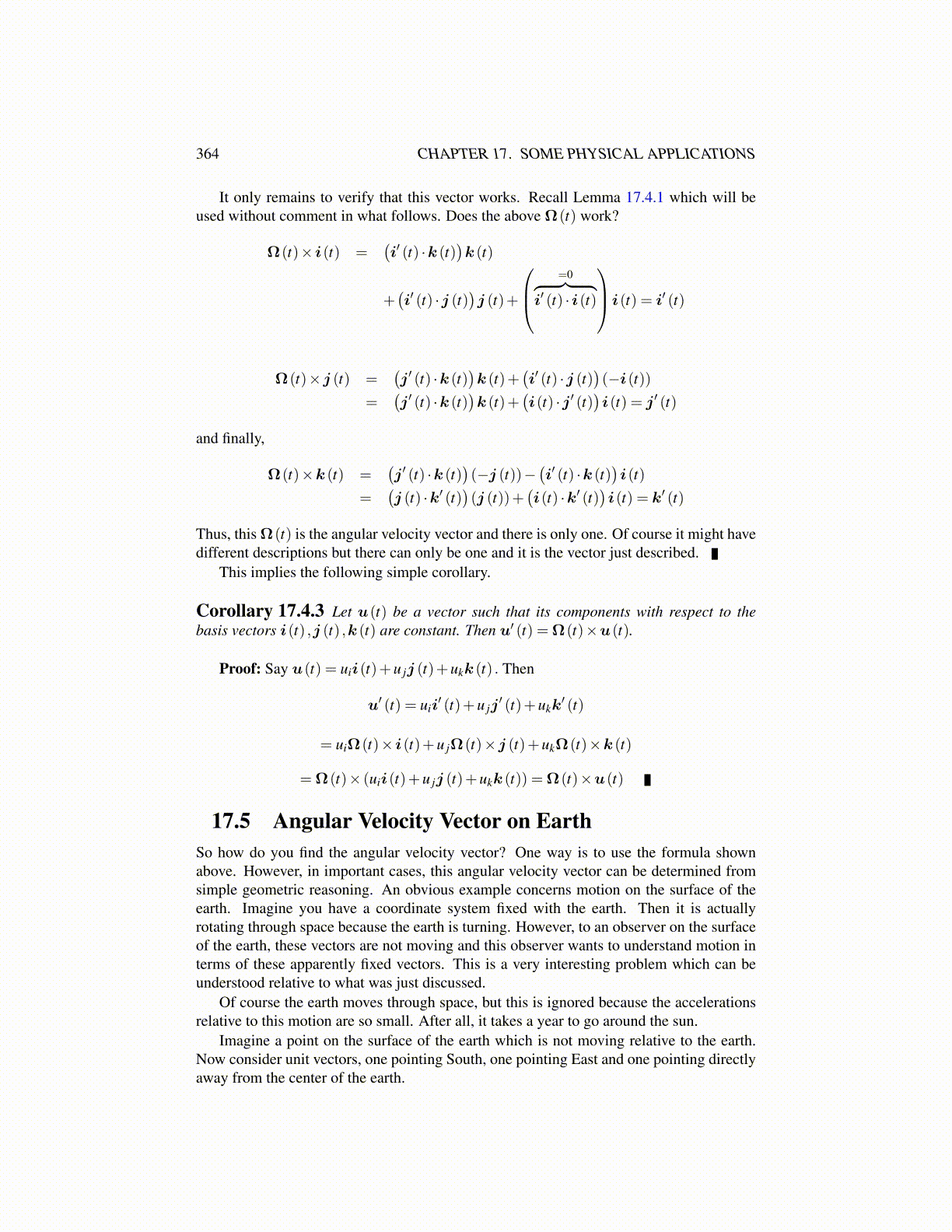
364 CHAPTER 17. SOME PHYSICAL APPLICATIONS
Thus, when you differentiate a vector w, you write it as ẇ=w′B +Ω(t)×w where w′
B isthe perceived time derivative in the moving coordinate system.
w′B (t) = w′
1 (t)i(t)+w′2 (t)j (t)+w′
3 (t)k (t)
Let rB (t) be the position vector from this point p(t) to some other point.
rB (t)≡ x(t)i(t)+ y(t)j (t)+ z(t)k (t)
The acceleration perceived by an observer moving with the moving coordinate systemwould then be
aB (t) = x′′ (t)i(t)+ y′′ (t)j (t)+ z′′ (t)k (t)
and the perceived velocity would be
vB (t)≡ x′ (t)i(t)+ y′ (t)j (t)+ z′ (t)k (t)
Let r (t)≡R(t)+rB (t) . Then, since R(t) has constant components relative to the movingcoordinate system, Ṙ(t) = Ω(t)×R(t). It doesn’t have constant components fixed inspace, just with respect to the moving coordinate system. Thus, using the above observationwith the usual conventions that v is velocity and a acceleration,
v (t)= ṙ (t) = r′B (t)+Ω(t)×r (t)≡ vB (t)+Ω(t)×r (t)
Now go to the acceleration. Using the same process, a= v̇ =
v̇B + Ω̇×r+Ω×ṙ = aB +Ω×vB +Ω̇×r+Ω× (vB +Ω×r)
= aB +2Ω×vB + Ω̇×r+Ω× (Ω×r) (17.15)
17.7 Coriolis Force on the Rotating EarthAs explained above, on the rotating earth, Ω is a constant and so 17.15 reduces to
a= aB +2(Ω×vB)+Ω× (Ω×r) (17.16)
Since rB +R= r,
aB = a−Ω× (Ω×R)−2Ω×vB −Ω× (Ω×rB) . (17.17)
In this formula, you can totally ignore the term Ω× (Ω×rB) because it is so small when-ever you are considering motion near some point on the earth’s surface. To see this, note
ω
seconds in a day︷ ︸︸ ︷(24)(3600) = 2π , and so ω = 7.2722× 10−5 in radians per second. If you are using
seconds to measure time and feet to measure distance, this term is therefore, no larger than(7.2722×10−5
)2|rB| .
Clearly this is not worth considering in the presence of the acceleration due to gravity whichis approximately 32 feet per second squared near the surface of the earth.